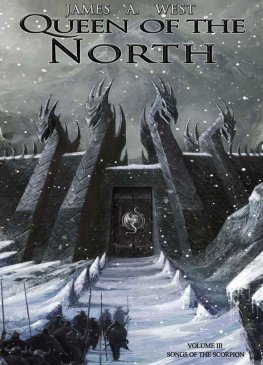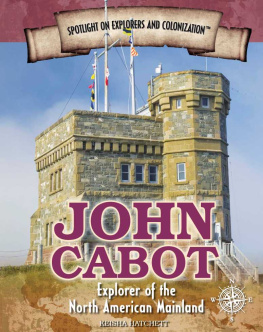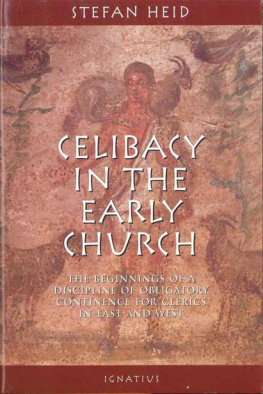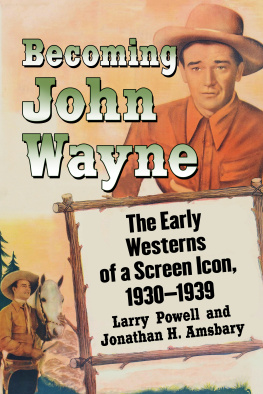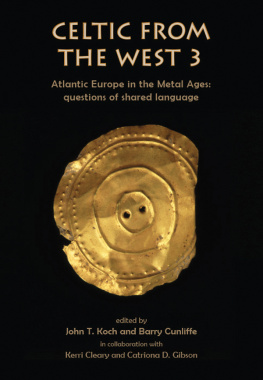EDITORS INTRODUCTION
The early history of Chicago has much to do with the Kinzies and their connections. It is particularly fortunate that one of this family should have given to the world, out of the abundance of her recollections of the early day, what has become a classic in the historical literature of the Middle Westthe Northwest of a half-century ago.
Kinzie is but an abbreviated form of the old Scotch name of Mackenzie. John Mackenzie must have been among the first subjects of Great Britain to emigrate to Canada upon the downfall of the French regime; for his son John (afterwards called Kinzie) was born in Quebec, in 1763, the year of the Paris treaty. The family soon moved to Detroit, and there the elder Mackenzie died, during Johns infancy.
The widow had previously been married to a Mr. Haliburton, by whom she had a daughter, a beautiful and accomplished girl, who in turn became the mother of General Fleming, Nicholas Low, and Mrs. Charles King, of New York. John Kinzie was the only issue of the second marriage. In due time, Mrs. Mackenzie married a third husbandWilliam Forsyth, another Scotchman, who had come to New York in 1750, fought under Wolfe on the Plains of Abraham, and was twice wounded. The Forsyths moved to New York City, whither young John Kinzie was taken. When some ten or eleven years of age, while at school at Williamsburg, on Long Island, with two of his half-brothers, Kinzie, a restless, adventurous youth, ran away to his native town, Quebec. There he was, when nearly starved, picked up on the streets by a silversmith, and incidentally learned something of the craft of his benefactor. There are evidences of his being in Detroit, as a fur-trader, as early as 1795; and by the close of the century this thrifty young Scotchman is known to have had trading establishments on the Maumee, at Sandusky, and at St. Josephs, on Lake Michigan.
Young Kinzies life had been a continual romance, but it was no less so than that of his first love. During one of the numerous forays over the Virginia border, made by the Shawanese during Lord Dunmores War (1774), a band of these barbarians swooped down upon the rude cabin of Isaac McKenzie, who had established himself at the junction of Wolfs Creek with the Kanawha River. McKenzies wife was killed, but their two young and beautiful children, Margaret and Elizabeth, were borne away to the great Shawanee town of Chillicothe, in what is now Ohio. Here, in accordance with Indian custom, the girls were adopted into the family of a chief, one of whose squaws was assigned to their tender rearing.
After eighteen years, when Margaret had developed into a young woman of rare loveliness, she accompanied her foster-father upon a hunting expedition to the vicinity of the present Fort Wayne, in Indiana. A young Shawanee chief, present at the hunt, paid mad suit to this forest beauty; but, still pining for civilization, she scorned her Indian lover, and he set out to take her by force, as had ever been among his people the custom of rejected suitors. At midnight, as the nomadic village was echoing with the din made by the chiefs followers, who were preparing to assist in this intended capture of a wife, Margaret silently stole from her wigwam, for it was a case in which custom decreed that she must rely solely upon herself, and took refuge in the depths of the forest. Her persistent lover was close at her heels. She ordered her faithful dog to attack him, and while man and brute were engaged in savage combat, flew through the woods to the stockade where the ponies were kept. Leaping on the back of a favorite, Margaret plied him with rope-end and voice, through seventy-five miles of wilderness, all the way to her barbaric home in Chillicothe, where the poor animal dropped dead. Here, at last, she was safe from her lovers attentions.
Not long after Margarets thrilling experience, the two girls were taken to Detroit by their foster-father, who proudly showed them to his white friends. The old chief, however, recked not of the power of love. A Scotchman named Clark became enamoured of Elizabeth, and John Kinzie saw in Margaret his hearts desire. The two couples mated in Indian fashion, and lived together in the woods for some five yearsElizabeth bearing two children, and Margaret three (William, James, and Elizabeth).
When the strength of Indian power in the country north-west of the Ohio River was at last broken in the decisive battle at the Fallen Timbers, followed by the treaty of Greenville (1795), and in another year by the removal of British garrisons from the posts on the upper lakes, communication was again possible between the American colonists and the Northwest. Isaac McKenzie heard of the presence of his daughters in the Michigan wilderness, and in his old age laboriously worked his way thither to visit them. There was a pathetic reunion; and when the white-haired frontiersman went back to Virginia, Margaret and Elizabeth, declining the legal marriage proffered by their consorts, followed him to the old home, Margaret leaving her children to be cared for by their father.
Elizabeth in due course legally married a Virginian named Jonas Clybourn, and Margaret also legally united domestic fortunes with one Benjamin Hall of that state. Sons of these second unions eventually came to Chicago, and took prominent parts in the drama of pioneer life in Illinois and Wisconsin.
In 1800, John Kinzie married Eleanor (Lytle) McKillip, the widow of a British officer, who had had by him a daughter named Margaret. The Kinzies, with their infant son, John Harris (born at Sandwich, Ontario, July 7, 1803), apparently settled at Chicago in the spring of 1804, John Kinzie being the trader at Fort Dearborn, then just constructed. Kinzie was also appointed sub-Indian agent, and later was a government interpreter. His connection with the massacre at Fort Dearborn, in 1812, is best related in Wau-Bun itself. In 1823, he was appointed a justice of the peace; in 1825, agent at Chicago for the American Fur Company; he died at Chicago in 1828, aged sixty-five. His four children by Eleanor were: Jolm Harris (1803), Ellen Marion (1805), Maria Indiana (1807), and Robert Allen (1810). His two children by Margaret McKenzie were tenderly reared by Mrs. Kinzie, who, before her marriage, had been fully informed of the circumstance of the earlier union under the forest code of the day.

JOHN HARRIS KINZIE.
From copy of oil portrait by G. P. A. Healy, painted by Daisy Gordon, in possession of Chicago Historical Society.
It is with John Harris Kinzie that our immediate interest lies. His early youth was spent in Chicago; he was nine years of age at the time of the massacre in 1812; during the next four years the family remained in Detroit, only returning to Chicago when (1816) the former town was captured by General Harrison; in 1818, he was sent to Mackinac to be apprenticed to the American Fur Company. Carefully trained to the conduct of the fur trade, then the principal commercial interest in the Northwest, young Kinzie was sent, in 1824, to Prairie du Chien, where he learned the Winnebago language and thereof partly constructed a grammar. Two years later, we find him installed as private secretary to Governor Lewis Cass, in whose company he assisted in making numerous treaties with the aborigines. It was while in this service that he went to Ohio to study the language and habits of the Wyandots, of whose tongue he also compiled a grammar. His remarkable proficiency in Indian languages led to his appointment, in 1829, as Indian agent to the Winnebagoes, at Fort Winnebago (Portage, Wisconsin). Upon the death of his father, he fell heir to the Winnebago name, Shawneeaukee, which appears so frequently in the text of




